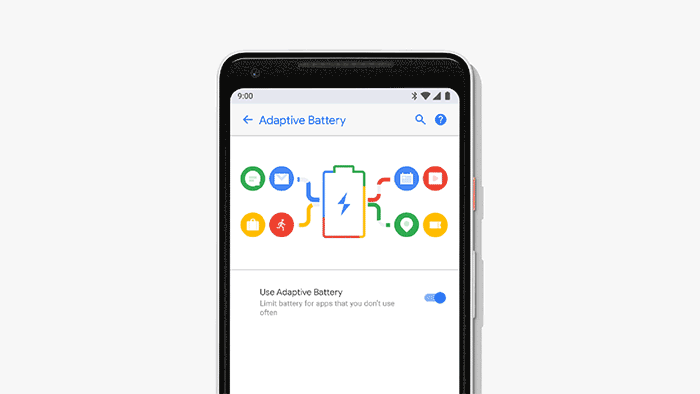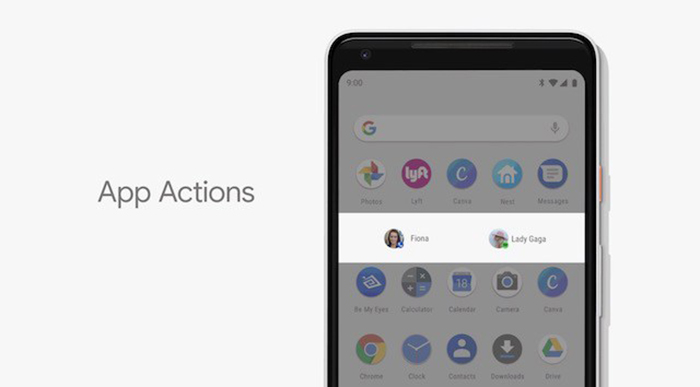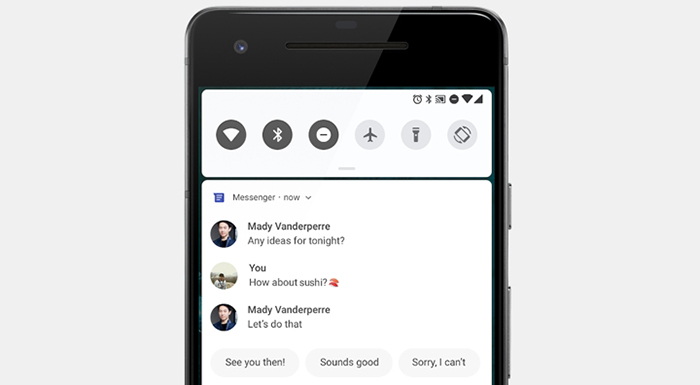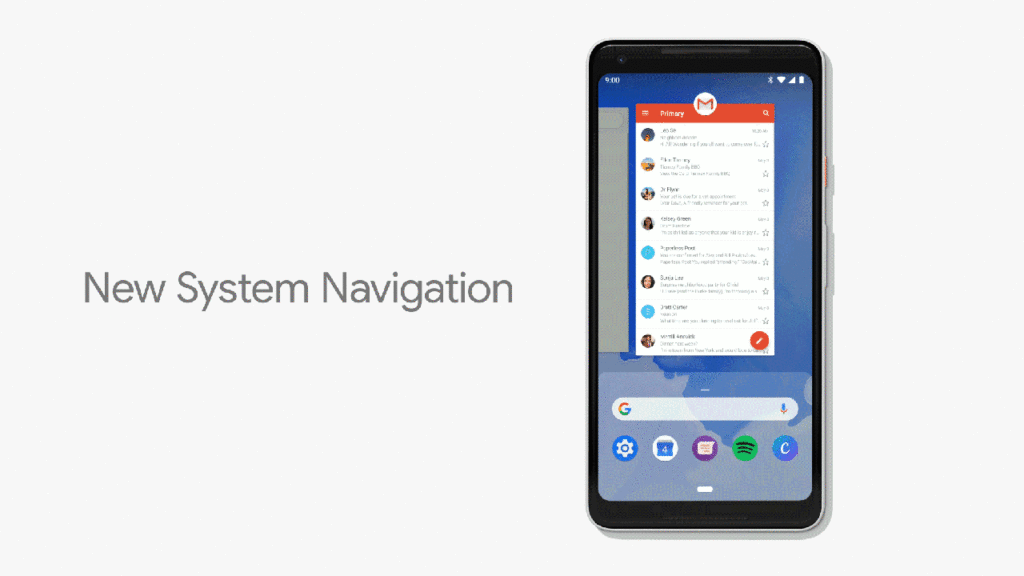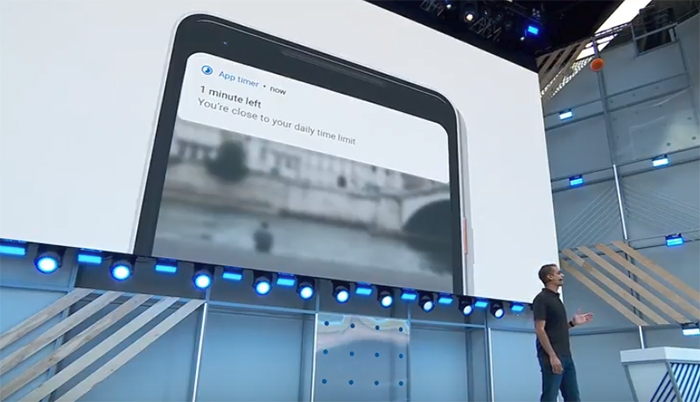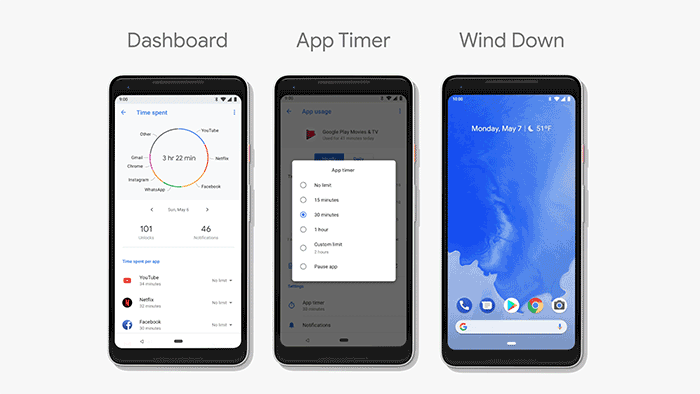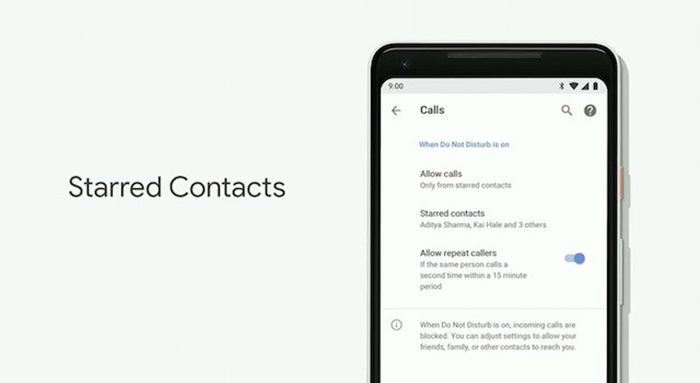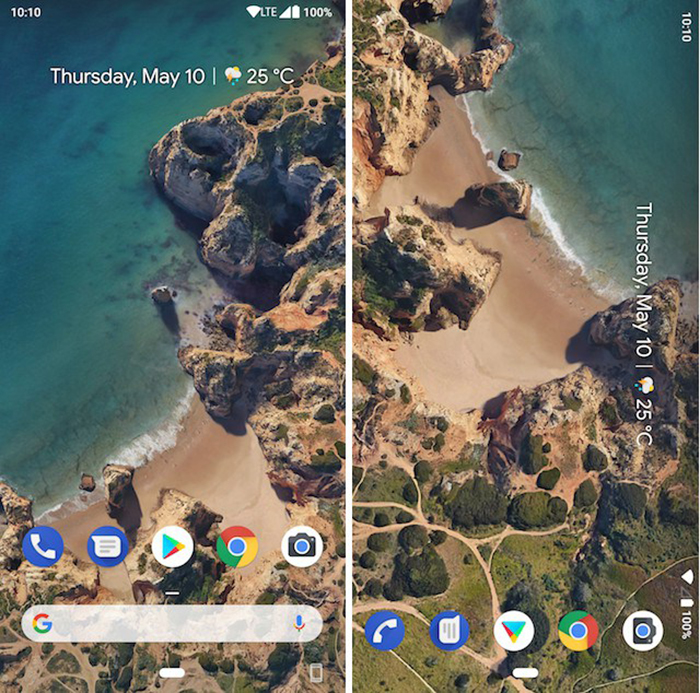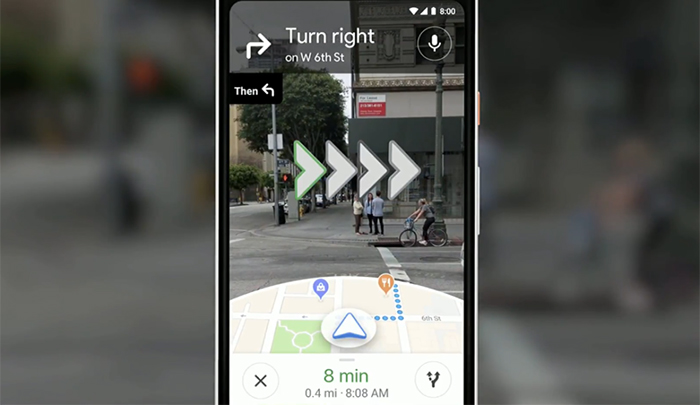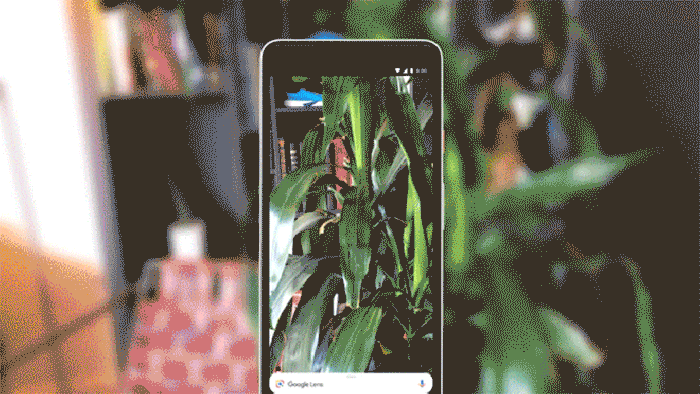
20+ Best New Android P Features That You’re Going to Love!
Android users are in for a big surprise this year. After taking some time to improve the world’s most popular mobile OS, Google has decided to bring a bunch of user-oriented features. This means that once you upgrade your device, you’ll immediately see a redesigned UI and new tools. So, here are the most exciting new Android P features.
The Best New Android P Features
Throughout this article, we will be talking about new features that are currently present in the Android P Developer Preview - the second major version. Differently said, the software is in beta which allows developers and interested users to test-drive it. We expect Android P to be released this fall, giving Google a plenty of time to polish them. So, take a look at what’s next.
Intelligent Features of Android P
First, we will take a look at so-called ‘Intelligent Features’. This is Google’s effort of bringing automatic optimizations based on your habits. Your smartphone will use AI (Artificial Intelligence) to track your habits and provide better control of different aspects.
Adaptive Battery Performance
In case you’ve been paying attention to Google’s tech innovations, you know that the company likes to brag about AI. Named DeepMind, the company has come up with a technology that controls how apps are using your device’s battery. This means that most frequently used apps will be prioritized when it comes to battery usage. Those apps that you don’t use as often will no longer use battery power when in standby mode.
Adaptive Brightness Levels
These days, all flagship smartphone use ambient lighting to set up the brightness of your screen. Google is going one step further and now utilizes the power of AI. Aside from the ambient lighting, Android P will learn your habits in terms of your personal preferences related to your surroundings. As a result, the system will come up with patterns and try to predict your behavior. For example, it will automatically dim the screen before you go to your bed at night.
Application Actions
Apps will become smarter in predicting your behavior. Android P users will be presented with a set of actions when the time comes. For example, when you connect to a smart speaker, Spotify might offer to play the most frequently played songs (playlists). This feature is also present on the Launcher, Smart Text Selection, Google’s Play Store, and within Google Assistant.
App Slices
When it comes to brand-new Android P features, App Slices is what will excite the majority of users. As its name implies, this feature dives into individual apps and extracts the most useful features. This might sound complicated but it’s quite simple (which is what makes App Slices so amazing). When you search for Uber on your phone, this tool won’t only provide a way to open the app but to book a ride to your home or work, along with prices – all in the search field itself.
Refined Notification Management System
As helpful as they can be, notifications can be very annoying as well. Your smartphone might make a sound or vibrate every few minutes in case you receive a lot of notifications. With the power of UI, one of new Android P feature is AI management of notification. Android P will try to learn your habits of dismissing notification messages. You will get to see new ways to controlling these messages by muting or blocking them – all within Android’s new notification pane.
Advanced Controls & Gestures
Depending on a smartphone you use, you control Android by using three of four bottom-located icons. These help you to go one step back, return to the Home screen, and multitask. One of the most exciting Android P features is all-new gestures. You can enable these by going to Settings > System > Gestures > Enable ‘Swipe Up on Home Button’. From there on, you can use a new Pill icon to return to the Home screen, swipe it up to multitask and longer swipe up to open the App Drawer. There more advanced gestures like swiping right to switch between open apps. Make sure to learn more about Android P's new gestures.
Digital Wellbeing Features of Android P
Android P offers a whole slate of features that you control how much and in what way you use your phone. We have heard a lot of information about how using a smartphone is bad for our health, and how smartphone addiction is real. Google’s response to these concerns is the set of Android P’s ‘Digital Wellbeing’ features.
App Timer
Let’s say that you find out that you’re using Facebook more than 2 or 3 hours combined in a single day. The next step is to limit how much time you spend browsing this social media network. Android P will let you set a timer which will block access to the Facebook app after the time runs out. The icon of this app will be grayed out, and you won’t be able to use it.
Android P Dashboard
As you use your smartphone, Android P collects plenty of useful information. All this data is displayed on the new ‘Android Dashboard’. This is a place to review how much time you’ve spent using apps, how many times you’ve unlocked your phone, and similar information. It’s also important to mention that you’ll see nicely designed graphs. In case you have any concerns about using your phone, this could be a valuable place to get informed.
Refined ‘Do Not Disturb’ Mode
The already present ‘Do Not Disturb’ mode has received plenty of improvements. The main goal of this mode is to stop your phone from distracting you during a certain period of time. However, the newly refined mode completely silences all notifications and phone calls as well. This means that you won’t ring, vibrate, and you won’t even see visual interpretations that appear on your phone. Once you return to the regular mode, you’ll get to see what you missed earlier.
Shush Mode
You probably use the ‘Do Not Disturb’ mode overnight, or in the evening when you return home from work. However, these are not the only situations when you need complete silence. So, one of new Android P features is the ‘Shush Mode’. Just place your phone on your desk with the screen facing down. After a few moments, your phone will enter the ‘Do Not Disturb’ mode.
Wind Down
You might think that the greatly improved ‘Do Not Disturb’ mode should be enough to prevent your phone from alarming you. However, there’s another mode if you to go all the way. Called ‘Wind Down’, this mode is activated using Google Assistant. This will enable the Night Light, activate the ‘Do Not Disturb’ mode, and even turn your phone’s screen to grayscale.
Starred Contacts
We all know that emergency situations might happen. So, what can be done to enable others to contact you while your phone is in the ‘Do Not Disturb’ mode? Well, you can select contacts who have the privilege to bypass all digital wellbeing tools. Also, you can define how your phone acts in case of repeat callers. For example, if someone tries to reach you by calling you over and over again, Android P will disable the ‘Do Not Disturb’ mode and let you know that there might be an emergency.
User Interface Changes of Android P
As we noted in the introduction, Android P brings new features and enhancements that you’ll see as soon as you update your phone. Let’s take a look at these user interface changes.
New Quick-Access Volume Menu
You can use the volume buttons on the side of your phone to make the volume go up and down. Android P doesn’t change this option but it brings a nicely designed interface. Once you update to Android P, you will see a slim volume interface on the right side of the screen. In addition, there is a new button that lets you switch between the mute of the vibrate profile without unlocking your phone. However, please note that you’ll need to enable this option by going to Settings > Sounds > Prevent Ringing > Select whether you want to enable vibrate or mute.
Paginated Quick Settings Panel
At the moment, Google is experimenting with a new look for the Quick Settings Panel. In case you don’t know what that is, this panel appears as you scroll down from the top of the screen – and brings a series of quick toggles. The latest beta version brings the ability to scroll through this grid of icons or to use pages (to swipe left or right). At the moment, Google is using the paginated panel.
Home Screen Rotation Toggle
Even though this option is not present on all Android phones (depending on different manufacturers), native Android can rotate the entire screen into the landscape mode. There is now a new icon that lets you rotate the screen. This means that even if you’re on the Home screen, you can rotate the orientation easily.
New Home Screen Menu
In earlier Android version, you could long-press on the Home Screen to fade it black. With Android P, you can long-press on the Home Screen if you want to access a group of shortcuts that include Home Settings, Widgets, and Wallpapers. We are sure that many of you won’t be thrilled with this, which is why we’re sure that Google will make this change optional.
New Lock Screen Preview
Earlier versions of Android didn’t show anything other than the required access fields on the Lock Screen. This applies to those who used a PIN, password, or pattern lock to add a security layer to their smartphone. This simple interface has been replaced with a more colorful one. Now, the lock screen comes with the clock and a preview of your wallpaper. As you can see, this is a minor UI change. However, it’s good to see that Google is paying attention to little things as well.
App Updates & Miscellaneous
Aside from numerous new Android P features, we have plenty of app updates. Along with the new version of Android, several Google-made apps will bring a makeover. Here’s what you need to know.
Google Maps
Google has recently introduced a number of new Google Maps features. Some of the most exciting ones are the ‘Augmented Reality Directions’ which uses your camera to help you figure out where you need to go. Then, there are ‘Suggested Places’ powered by AI that gives you recommendations of new venues around town. There is also ‘Group Planning’ that allows you to make plans with your friends in an easy way and create shareable links.
Google Assistant
Being present on a huge number of devices (more than 500 million devices, to be exact), Google Assistant is becoming even more capable than before. This morning, 6 new Google Assistant voices have arrived. Then, there’s the promise of adding a new voice featuring none other than John Legend. Aside from these ‘cosmetic’ changes, you can now use Google Assistant continuously without saying ‘Hey Google’ all the time. Also, let’s not forget about Google Duplex – powered by the company’s AI solution. This is certainly one of the most interesting Android P features – which allows Google Assistant to make calls on your behalf. Even though it will take some time until it gets ready for primetime, first aspects of Google Duplex will arrive later this year. And finally, it’s also worth noting that Wear OS will receive new Google Assistant features soon.
Google Photos
Once it arrived, Google Photos become of the most beloved products by Google. Offering unlimited free storage and an easy way to edit and sort photos, this app is poised to become even better. Android P will bring a new Google Photos version with ‘Suggested Actions’ that anticipate your editing rules for certain photos. There are also ‘Smart Edits’ that suggest editing tools based on your photo’s composition. It’s interesting to note that this app can use AI to colorize old and vintage photos.
Google Photos will also soon become a document scanner. When you take a photo of a document, this app will scan the photo and convert the document to PDF.
Google Lens
By using Google Lens, you can scan your surroundings and get additional information about all sorts of things. A new Android P feature, called ‘Smart Text Selection’ will expand Lens’ capabilities. This tool will extract and copy text from physical objects using your phone’s camera. In other words, just point your phone to a text on the wall or on paper, and your phone will transcribe it in real-time. After that, you can edit and copy the text to any app.
Final Thoughts
Dear Android fans, this is where we conclude our article on the best new Android P features. We sincerely hope that you’re excited as much as we are about this new release. If that’s the case, make sure to sign-up for the latest Android P beta and download it to your device.
In case you’d like to spread this knowledge to other Android users, why not share this article online? Thank you!

